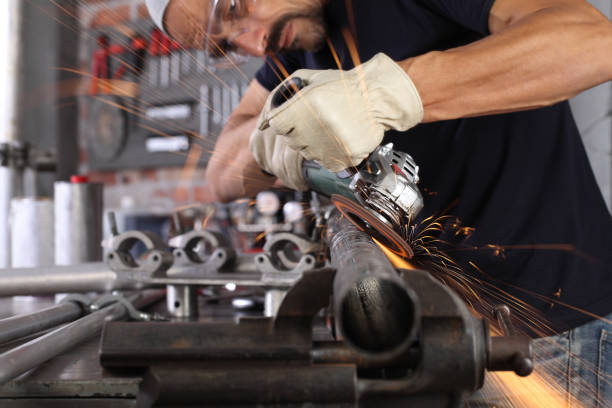Here's How To Choose The Best Vise For Your Job

A good vise is a crucial instrument for precision machine. To make Quick change systems that your workpiece remains secured while it is milled, it is essential to select the correct size vise. Three kinds of vises are commonly used in CNC milling the machinist's vise (also known as the CNC vise) and the vise that is called the toolmaker (also known as the toolmaker vise).
Machinist Vise
It is popular due to its versatility, the machinist vise is a great multi-purpose tool. The vise has an flanged bottom, which provides greater stability and permits an easier clamping of the self-centering vise. It's great, but it takes up the space of. The majority of machinist vises that are top quality are "lock-down" vises. This means that the jaws' moveable part is less likely to rise up while the vise screw is tightened
CNC Vise
The CNC vise tackles the challenges of a machinist vise by offering the most compact design and all the rigid holding of a machinist vise. Multiple vises can be used in parallel, with the least amount of space due to the smaller size of its footprint. CNC vises can be secured horizontally or sideways , as they are precision ground on multiple sides. The absence of a flute makes attaching them to the table a bit more difficult, but this is a problem that can be solved with the help of special table clamps that are included in the mc power vise. CNC Vises are also lock-down designs.
Toolmaker Vise
The vises for toolmakers are smaller cost, less expensive, and surprisingly precise, but they are more difficult to operate, as the tightening method uses an enumeration latch that is multistep instead of an entire length screw. If your work needs to be moved between machines, vises designed for toolmakers are an ideal option. You can put the work in a tiny vise designed for toolmakers, and then move it to a different machine without disturbing the workpiece, including to an a mill, drill press, surface grinder or to larger machinist vise. The lock-down mechanism prevents the jaws from lifting. But, vises for toolmakers do not typically come with accessories like replaceable jaws or work stops.
The History of Workholding
Workholding today is the result of trial, experimentation and creative thinking. The idea of clamping pieces of work has been around for centuries, with early versions illustrated in Egyptian tombs. The Egyptians utilized an robe to cover the workpieces and then inserting the stick. It was used to hold the piece.
The screw was later invented, and the modern vise came into existence in the middle of 1800s. The first screw vises made from wood were made with precision ground metal designs. Vises with lockdowns were introduced to make them even more precise. The jaws that surround the workpiece would be lifted slightly when the screw was turned backwards. This was because the screw didn't directly apply force directly to the jaw that could move. Lockdown vises have an articulation mechanism under and inside the jaw which converts the force of forward from the screw into forward or downward forces that force the jaw. The jaw is able to stay down and square to the base, even if the work is elevated and only supported by the top of the jaws.
Workholding is continually being reviewed by both the doers and makers in machining, so this isn't the final word on vises. However, it is an interesting review of how the vice on your bench was created.
